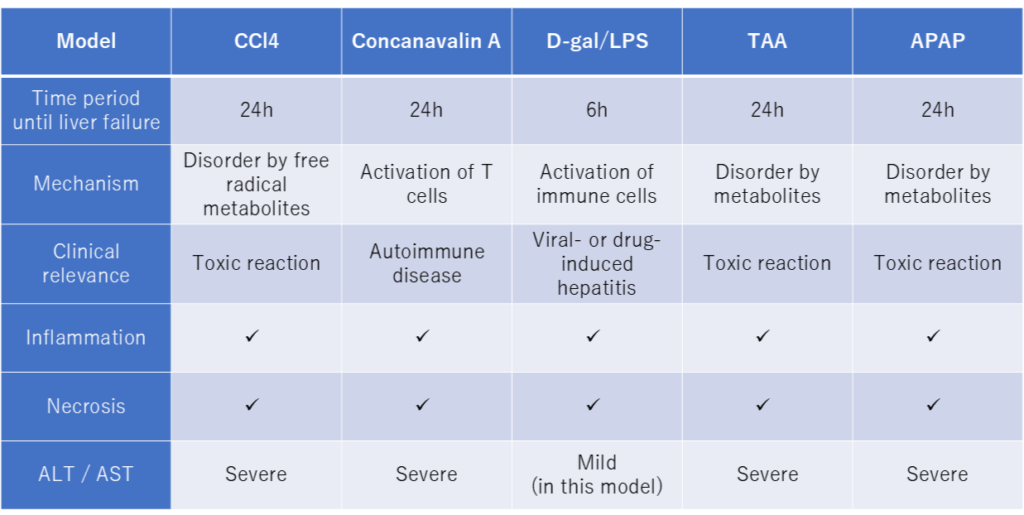SMC MODELS
Concanavalin A-induced acute liver failure model
The Concanavalin A-induced acute liver failure model
The Concanavalin A-induced acute liver failure model is widely used for acute immune mediated hepatitis in contrast to several other models. It is primarily driven by the activation and recruitment of T cells to the liver.
A single shot of Concanavalin A is administered intraperitoneally to 6-weeks old, male C57BL/6J mice which induces the disease in 24h. The administration of Concanavalin A leads to severe liver inflammation, tissue necrosis and terminal organ failure. This model can be used for the pharmaceutical drug evaluation of drugs against activated T cell-driven hepatitis and acute liver failure.
Comparison of different acute liver failure (ALF) models

For a more in-depth information on each model feel free to check out our other ALF models:
CCl4 Acute Liver Failure Model
D-gal/LPS Acute Liver Failure Model
APAP Acute Liver Failure Model
Analysis items and key endpoints
Histopathological analysis
HE Staining for evaluation of necrosis / inflammation
Immunohistochemistry
For different molecular markers
Biochemistry analysis
ALT
AST etc.
Gene expression analysis
TNF-α
IL-6 etc.
Cytokine analysis
TNF-α
IL-6 etc.
Contact us
If you would like to discuss which of the available acute liver failure models fits best to your drug development approach, please feel free to reach out to us using the contact button below. We are looking forward to your inquiry!
